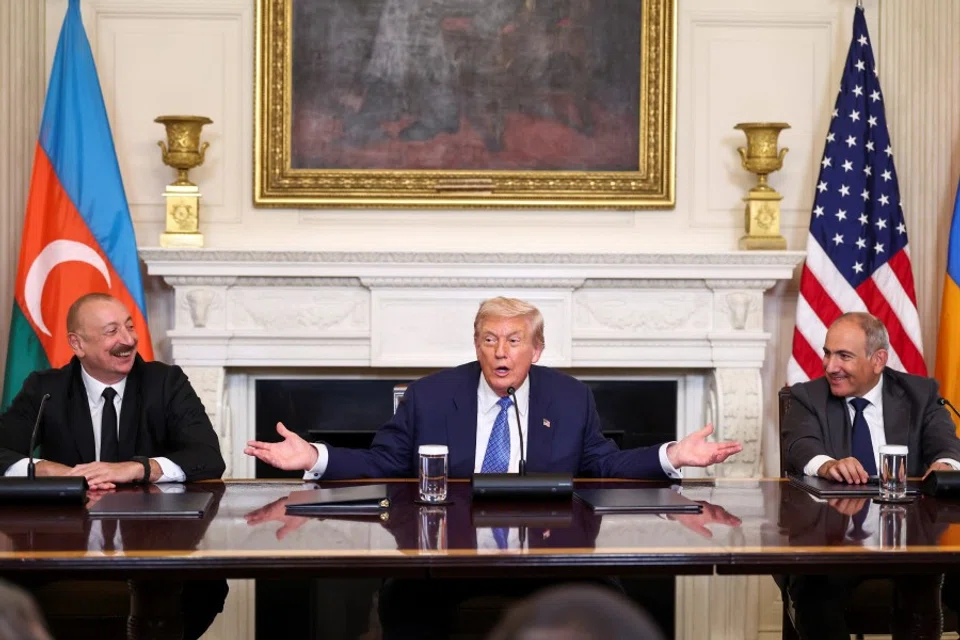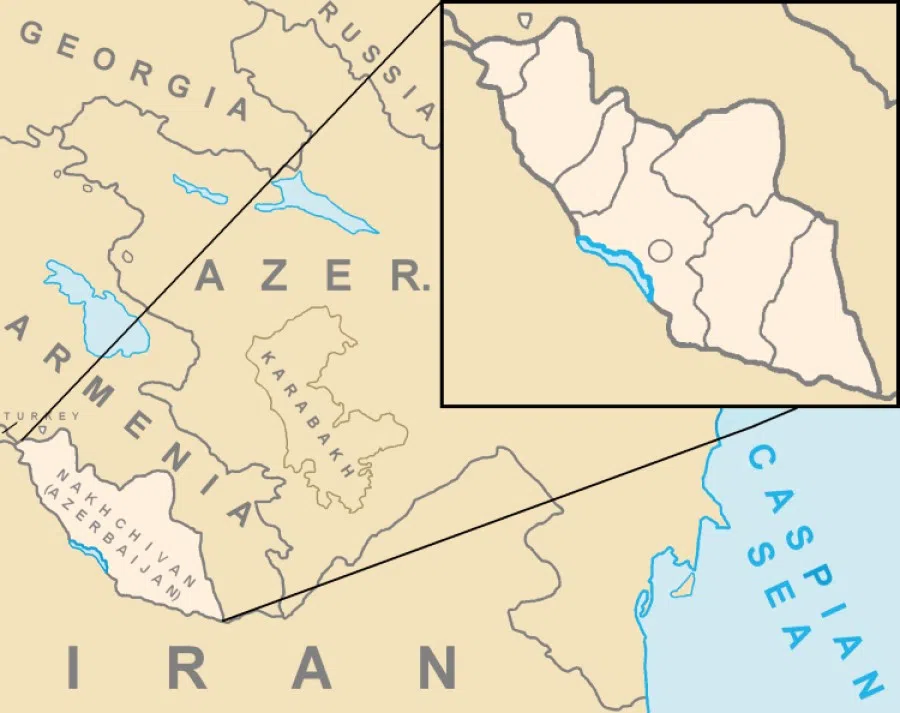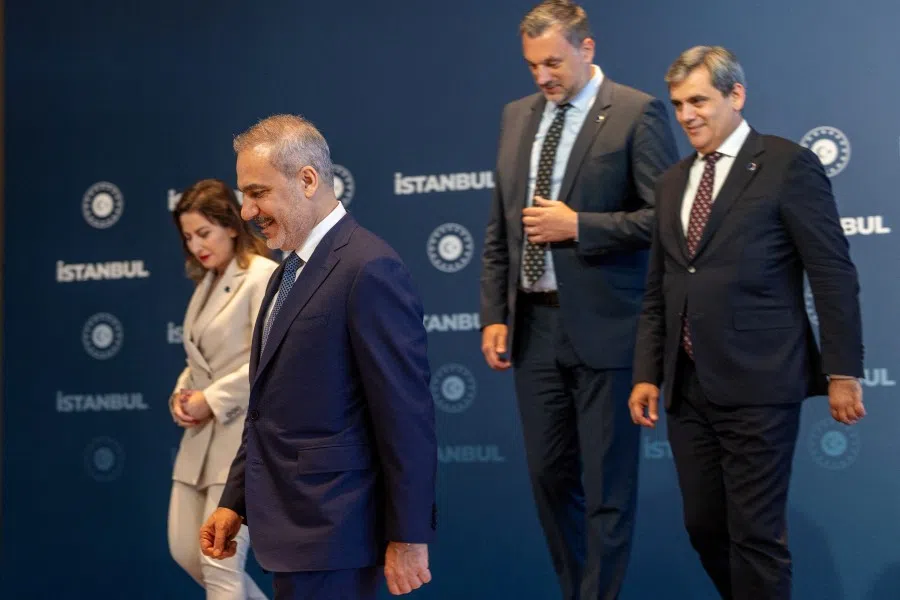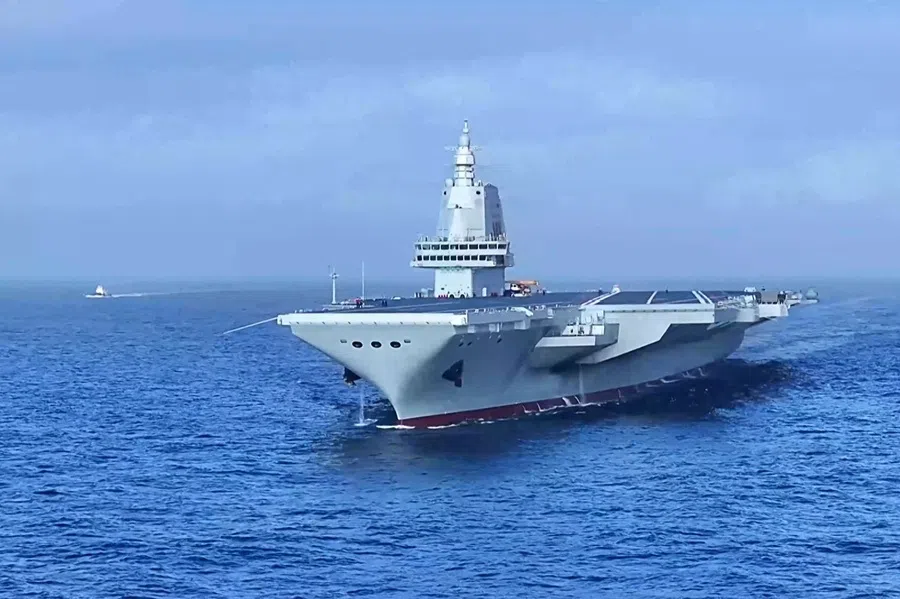Rewiring Eurasia: How the Trump Route challenges China’s influence
The Trump Route for International Peace and Prosperity (TRIPP) initiative under the US-brokered deal between Armenia and Azerbaijan complicates China’s strategic calculus in the South Caucasus. Researcher Eka Khorbaladze explains.

The US-brokered framework signed in Washington on 8 August between Armenia and Azerbaijan contains a deceptively small but geopolitically outsized provision: development rights over a roughly 32-kilometre transit strip in Armenia’s Syunik province that connects Azerbaijan’s main territory with its exclave of Nakhchivan on the Turkish border.
Trump Route for International Peace and Prosperity
For over three decades, Armenia and Azerbaijan have fought over Nagorno-Karabakh, leading to two major wars and Azerbaijan’s eventual recovery of most of the territory in 2020. Nakhchivan, by contrast, has remained under Azerbaijani control since the Soviet era, yet persistent tensions with Armenia have long complicated reliable overland access.
... the US-brokered agreement effectively sidelines Russian mediation efforts, marking a shift toward Western influence in the region.

The new transit corridor — previously referred to as the Zangezur Corridor and now officially branded the Trump Route for International Peace and Prosperity (TRIPP) — will provide a direct link between the Nakhchivan exclave and mainland Azerbaijan, potentially reshaping the geopolitical architecture of the entire region and turning a local connectivity issue into a fulcrum for competing great power interests.
Russia sidelined in Caucasus
The deal — cementing the US’s foothold in the strategic Europe-Caucasus-Asia logistics chain — is a conspicuous US diplomatic win, signifying a strategic realignment in the South Caucasus.
Historically, Russia has exerted a strong influence in the region through its mediation in the Nagorno-Karabakh conflict and its role in the OSCE Minsk Group — an international mediation body co-chaired by France, Russia and the US, seeking a peaceful resolution to the Nagorno-Karabakh conflict.
However, the US-brokered agreement effectively sidelines Russian mediation efforts, marking a shift toward Western influence in the region.
Though, the Washington deal did not appear in a vacuum. Armenia’s ties with Russia have deteriorated since 2023 amid perceptions that Moscow failed to protect Armenian interests in Nagorno-Karabakh, and after Yerevan froze participation in the Russia-led CSTO security bloc.
Meanwhile, Azerbaijan has felt increasingly self-confident after its territorial gains, and has diversified partnerships (Turkey, Israel, and now closer transactional ties with the West), producing strains with Moscow over influence, maritime questions and competing energy/geopolitical priorities. Once close allies, Moscow and Baku now face their sharpest rift in decades.
This arrangement aims to facilitate the free movement of goods and people between Azerbaijan and Nakhchivan, bypassing traditional routes through Iran and Russia.

Baku retaliated with raids on Russian-linked media, closures of cultural offices, and blocking Russian officials’ entry. Those cleavages helped create the diplomatic space for a US initiative. That said, Moscow still retains military assets and levers in the region; local political grievances (refugees, property, cultural heritage) remain unresolved and can destabilise implementation.
Creating America’s new trade routes
The TRIPP corridor is envisioned as a multifaceted infrastructure project, including railways, oil and gas pipelines, and fibre-optic lines. Under the agreement, Armenia has granted the US exclusive development rights to the corridor for 99 years, with operations to be conducted under Armenian law. This arrangement aims to facilitate the free movement of goods and people between Azerbaijan and Nakhchivan, bypassing traditional routes through Iran and Russia.
For Armenia, the agreement offers the prospect of economic revitalisation through increased trade and investment, though it also raises concerns about sovereignty and regional isolation.
Economically, the corridor is poised to enhance trade connectivity between Azerbaijan, Turkey, and Central Asia, potentially unlocking new markets and supply chains. For Armenia, the agreement offers the prospect of economic revitalisation through increased trade and investment, though it also raises concerns about sovereignty and regional isolation.
Plugging into Trans-Caspian Route: the rising freight powerhouse
The new route neatly plugs into the Middle Corridor (the Trans-Caspian International Transport Route, TITR): freight runs from China through Kazakhstan to the Caspian, is ferried to Azerbaijan, traverses the South Caucasus (Baku–Tbilisi–Kars rail) to Turkey, and onward to Europe. The Middle Corridor has been the fastest-growing overland alternative to the northern route via Russia and to longer maritime legs.

Its pronounced growth is impressive: container flows have risen severalfold since 2022 and container volumes on the route reached tens of thousands of TEUs in 2024, with total tonnage in the low millions; multilateral forecasts from the World Bank and OECD say freight could at least triple by 2030 with infrastructure investment. Those projections, however, assume improved transshipment efficiency and regulatory coordination.
Less space for China’s Middle Corridor ambitions
From Beijing’s perspective, the corridor is double-edged. Economically, a fully operational TRIPP feeding reliably into the Middle Corridor offers benefits: it could lower transportation costs and provide alternative routes for Chinese exporters, thereby reducing reliance on traditional maritime chokepoints such as the Strait of Malacca.
But if the route becomes securitised or if Washington leverages its control for geopolitical influence, Beijing faces two difficult choices...
However, the strategic implications complicate this economic upside. China’s lack of direct involvement in TRIPP — and the fact that the development corridor is administered by the US – introduces a significant political variable.
If the corridor operates on purely commercial, non-discriminatory terms, Chinese logistics and industrial firms stand to gain. But if the route becomes securitised or if Washington leverages its control for geopolitical influence, Beijing faces two difficult choices: either accept higher operational costs or navigate a complex balancing act by engaging commercially with corridor operators while deepening political ties with alternative regional players such as Russia, Turkey or Georgia.

Overall, this US-led initiative complicates China’s strategic calculus in the South Caucasus. Given that China serves as the principal counterbalance to the US, today’s great-power competition has shifted away from traditional spheres of parity toward rivalry over transport-logistics networks and technological platforms.
The Middle Corridor, a vital component of China’s Belt and Road Initiative, represents a strategic asset that the US is likely keen to bring — at least in part — within its sphere of influence, thereby potentially constraining Beijing’s strategic manoeuvrability in the region.
A short road with a long shadow
If implemented as a commercial artery, the 32-kilometre strip could unlock tens of millions of tonnes of transit and help diversify Eurasian logistics. If it is treated as a geopolitical asset, it could accelerate great-power competition across a region long managed through delicate balances.
For China the choice is practical: double down on infrastructure and market access, or watch an alternate overland route grow under the control of a strategic rival. Either way, the TRIPP turns a local connectivity problem into a test of how commerce and geopolitics will be reconciled in Eurasia’s next chapter.
As the situation evolves, China will need to assess its strategies in Central Asia and the South Caucasus to navigate the shifting geopolitical landscape effectively.





